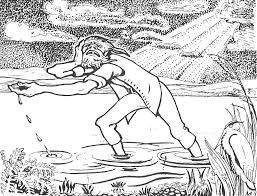On a particularly stormy night, when the wind howls down the chimney and the rain crashes against the windows, you might hear the spirit of John Tregeagle, wailing and raging as he roams the moors and cliffs or tries to complete various hopeless tasks.
Folk tales about Tregeagle agree that he was summoned from the dead as a witness by a debtor during a court case. To the surprise of everyone concerned, Tregeagle turned up, straight from Hell. Once back however, he wasn’t too keen to return, deciding to stay on to torment the living. Unwilling to pack him straight back to Hell, the exorcists, local clergymen, gave Tregeagle tasks to keep him occupied until Judgment Day.
One task was emptying the safely remote Dozmary Pool on Bodmin Moor using only a limpet shell with a hole in it. In some accounts he eventually succeeds in this and is given other jobs, usually involving making a rope from sand. The ingenious Tregeagle even manages to complete that in one version when the sand freezes on an especially cold night.
In other tales, he escapes from Dozmary Pool and turns up at Roche Rock. The priests there banish him to Padstow but he’s moved on by St Petroc, who makes a special return appearance in order to help his townsfolk turn out their undesirable guest.
There is supposed to be a real John Tregeagle, usually dated to the early 1600s. He was from St Breock and was steward to John Robartes (1606-1685) who owned the Lanhydrock estate. Tregeagle had a reputation for being harsh on the tenantry. In the folk tales this is elaborated on to include stealing an orphan’s inheritance, murdering his own wife and children and ultimately selling his soul to the devil.
The emergence in the mid to late 1600s of this Cornish version of the Faustian pact with the devil owes a lot to the context of the times. It may be significant that Robartes was a supporter of the Parliamentary side in the civil wars of mid-century but was surrounded by a largely hostile population sympathetic to the Royalists. The folk tale, emerging after the wars, no doubt fed on memories of mid-century and ‘evil’ Parliamentarians and Puritans.

And ‘Tregeagle’ is well memorialised inside St Breock Church.
LikeLike